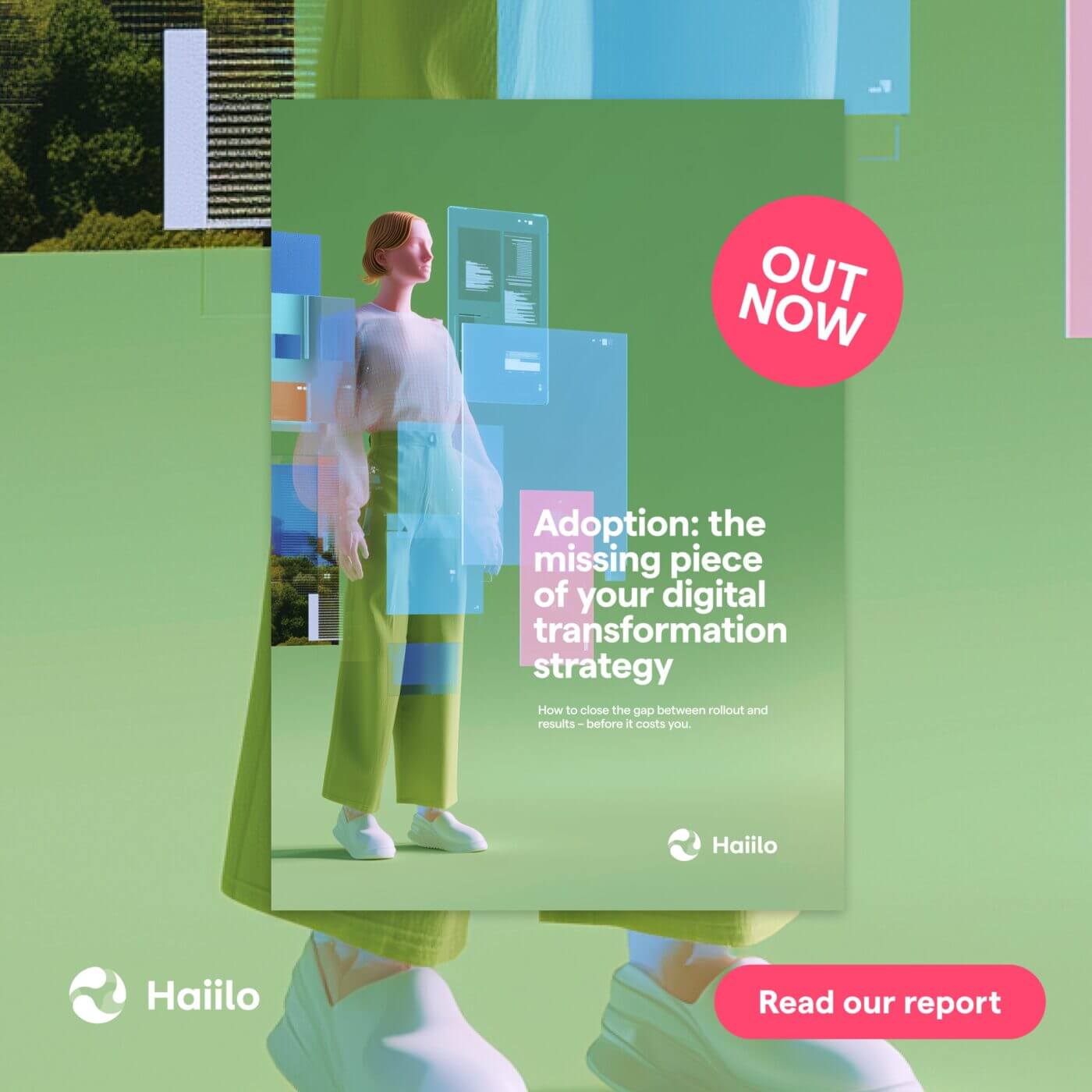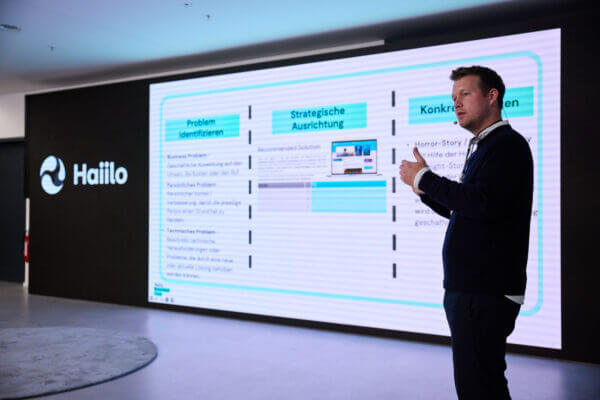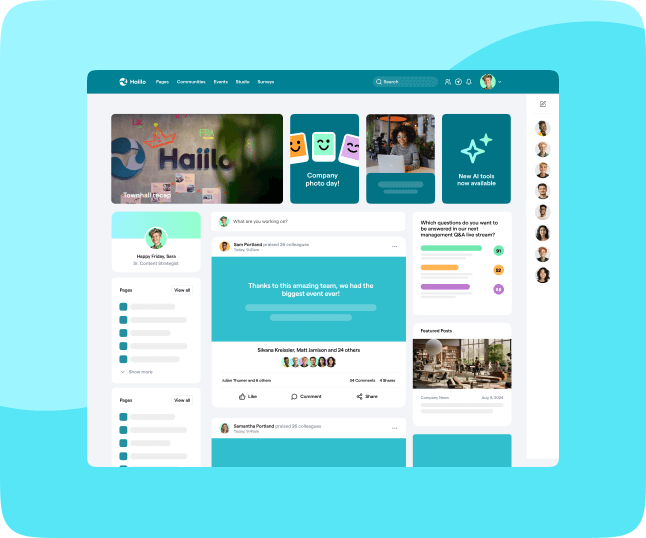By Gary Bennion, Chief Product and Technology Officer, Haiilo
If you’re leading an IT team today, there’s a good chance you’re underwater. You’re expected to move fast, stay secure, support business goals, and somehow keep up with endless tickets, requests, and tool ownership.
That’s understandable. Technology is at the heart of almost every strategic initiative. The problem is, instead of leading innovation, many teams find themselves caught up in day-to-day firefighting. Not due to lack of capability, but because we’re still being asked to manage tools that were never meant to be owned by IT in the first place.
One of the big culprits: your intranet.
When IT owns the intranet, progress slows down
Here’s how it usually goes:
You roll out the intranet, integrate it with your systems, set up permissions, and you become the default owner. That means every update, every content tweak, every structural change goes through your team.
So when HR needs to update policy documents, Comms want to publish an announcement, or a department head wants to refresh their team page, it’s another ticket on your backlog. Another “quick request” that pulls someone away from high-priority, high-skill work.
The result?
- Content updates get delayed
- Internal teams get frustrated
- The intranet becomes out of date, resulting in low engagement
- And your team ends up managing a platform no one’s even using
All of this goes against the motivation for buying an Intranet in the first place, but it’s not that your intranet is broken. The ownership model is broken.
Let go of control (but not standards or security)
The idea isn’t to throw open the doors and hope for the best. It’s about giving control to the right people, while IT keeps the structure and governance in place.
Departments like HR, Comms, and Operations should be able to manage their own areas. They know what needs to be shared and when. With the right tools, they shouldn’t need to know how the backend works or how to submit a ticket to update a button.
It’s here where we need democratisation.
That means shifting day-to-day intranet management to non-technical users – with the right permissions, templates, and controls.
When teams have the autonomy to own their content, the intranet is smoother, it’s relevant, and finally… actually useful, resulting in more employee engagement
💡Read: Why adoption keeps hurting your digital transformation strategy

What this looks like in practice
Let’s say Comms want to launch an internal campaign to boost engagement with your new tools. In the old model, they’d write the copy, send it to IT, wait for it to be published, and hope it went out on time.
In a democratised model, they log in, use a branded template, set it live, and track engagement – all on their own. No code. No tickets. No delays.
Same goes for HR uploading onboarding content. Or department leads posting project updates. The IT team doesn’t need to touch it, making communications frictionless and everyone happier.
Behind the scenes, IT still defines permissions, manages integrations, and ensures compliance. But you’re not babysitting all things intranet anymore. You’re building the infrastructure that lets others move faster while maintaining security and governance.
Better for efficiency. Better for security.
If you’re thinking “this sounds risky,” you’re not alone. But the truth is, centralisation doesn’t automatically equal security, especially when it leads to workarounds, bottlenecks, and frustrated teams starting to use shadow IT.
With the right platform, you can decentralise without losing oversight.
💡Read: 10 best intranet platforms
Haiilo, for example, supports:
- Single sign-on (SSO)
- Granular, role-based access control (RBAC)
- Centralised content templates
- Approval workflows
- GDPR-compliant data handling
So IT still owns the governance and guardrails, without having to deal with every edit or update.
The upside for IT is massive
The benefits aren’t theoretical. Here’s what actually happens when you democratise intranet management:
- Fewer tickets. Internal teams don’t need you for minor updates (allowing IT to focus on high value tasks)
- Faster publishing. No waiting around.
- More relevant content. Teams share what matters to them, when it matters.
- Higher adoption. When content is fresh and useful, employees engage (probably the reason you got the intranet in the first place).
- More time for your team. You can focus on security, systems, and strategy – not broken links and outdated blogs or wikis.
This is what modern IT leadership looks like
The days of IT being a bottleneck are over. Your job isn’t to manage every tool end to end. It’s to enable the business to move faster, safely.
Letting go of intranet content ownership doesn’t mean letting go of control. It means setting up the systems and structure for other teams to thrive, without compromising security or standards.
And that’s what smart IT teams are already doing:
They’re not saying, “Give us fewer tools.”
They’re saying, “Give us the right tools – the ones that free us up to do the work that actually matters.”
Why does this matter?
Today’s workforce is overwhelmed
- Employees juggle 35+ apps daily, wasting 61% more time than necessary
- 70% of employees lose 20 hours per week to fragmented systems
- 68% of organizations fail to achieve the desired ROI from digital transformation efforts
How can Haiilo help?
Haiilo helps IT teams do more with less – without adding complexity.
You don’t need more tools. You need better integrations, smarter automations, and less complexity. Haiilo is your intuitive Digital Home, and it brings together the tools you already love without overloading IT.
With Haiilo, you can:
- Improve user adoption with an interface employees actually enjoy using.
- Cut through the noise with smart, automated, and hyper-relevant updates.
- Eliminate tech bloat with 130+ integrations – everything in one place.
- Track usage, measure engagement, and optimize effortlessly.
The Impact:
- 75%+ frontline employee adoption
- 67% increase in productivity through smarter workflows
- $2.4m saved annually by reducing staff churn and inefficiencies






